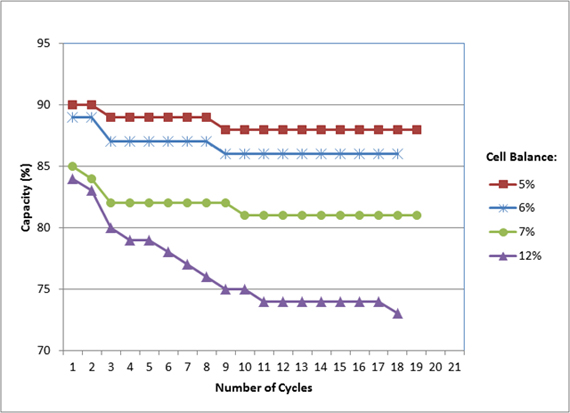I fly FPV (First Person view) Freestyle drones and use LIPO (lithium polymer) cells "Batteries" - (1300mah or 1500mah 4s & 6s if you know your batteries!)
We use these batteries (Similar voltages to the 18650/21700 in the teslas) between Voltages of 3.3volts to 4.2v (max) and the battery pack cells are in parallel so these cells can balance when they approach the 4.2v when charging. The Chargers we use does this balance for us using a balance lead on the battery which is connected to each cell. The balance to the cells happens at the top end of each charge and this is where the charge process becomes very slow!
There are batteries that have HV (High Voltage) chemistry in them and you can charge these upto 4.35v.
The 4s or 6s mentioned above denotes the number of cells (in a battery) in parallel to each other (4s = 4 cells @ 4.2v per cell, max charge each). Tesla battery packs are in both parallel & series to give you your battery capacity and Voltage. (not sure on the configuration)
Example:
Cells have a capacity and this is denoted as the example above "1300mah". (milliamp Hour) or 1.3ah (amp hour)
If a battery with 4 cells are in parallel (all batteries joined to gether) and have a 1300mah capacity to each cell, then the total battery capacity is still 1300mah but the voltage has increased to 16.8v (4 x 4.2v max charge). - "This would make your car faster but not go very far"
If they were in serial (in a daisy chain) then the capacity would be 5200mah but the voltage is only 4.2v (4 x 1300mah capacity) - "This would make your car slower but go much further than the parallel version"
So a balance between the 2 examples above is needed!
Also amps generate heat! so higher voltage and lower amps is better. It also looks after your motors. High volts - low amps!
We can fly these down to 3v but the battery cells can become out of sync/damaged so the 3.3v is kind of a buffer and most fly no more lower than this to preserve the batteries. I belive Tesla use this to have a buffer at the end. The bottom end of the battery voltage, below 3.3v the drones become less punchy, slouchy and slow, so the 3.3 to 4.2v the drone does not suffer this.
If a battery cell becomes weak/damaged it effects the rest of the pack by pulling these voltages down as well. Hence the need to balance and keep each cell the same (0.1v difference is fine)
The 18650/21700 batteries i believe can allow upto 20-30amp draw on each (thats the max amps per battery a driver might pull punching the fast pedal), but these batteries only charge at 0.5c rating. So a single 2500mah 21700 battery can take 2hrs to fully charge. But seems tesla battery tech can ramp that up to 1c maybe more?
charge rate (1c is denoted as 1hr to charge to the advertised battery capacity - 2500mah battery needs 2.5amps to fully charge in 1 hour from around 3.0/3.3v to 4.2v). 2c takes half the time to charge and visa versa!
So balancing a battery pack is needed to keep them in harmony. And ofcourse to see if any problems arise as you will notice this quicker with a well maintained balanced battery than 1 that is not.

Although im not sure how often! :/
Also you are more than welcome to put me right if anything is wrong!




